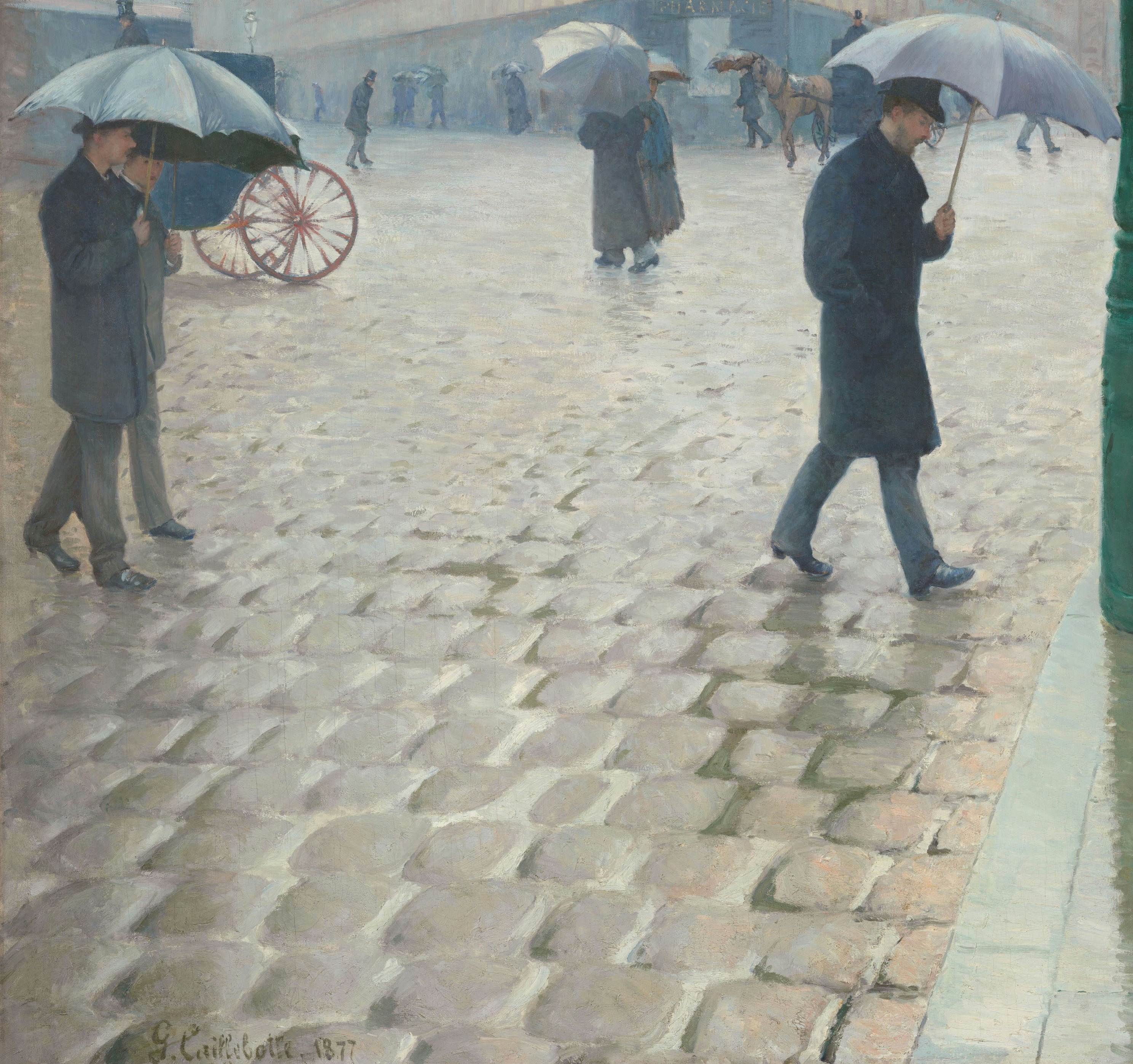This complex intersection, just minutes away from the Saint-Lazare train station, represents in microcosm the changing urban milieu of late nineteenth-century Paris. Gustave Caillebotte grew up near this district when it was a relatively unsettled hill with narrow, crooked streets. As part of a new city plan designed by Baron Georges-Eugène Haussmann, these streets were relaid and their buildings razed during the artist’s lifetime. In this monumental urban view, which measures almost seven by ten feet and is considered the artist’s masterpiece, Caillebotte strikingly captured a vast, stark modernity, complete with life-size figures strolling in the foreground and wearing the latest fashions. The painting’s highly crafted surface, rigorous perspective, and grand scale pleased Parisian audiences accustomed to the academic aesthetic of the official Salon. On the other hand, its asymmetrical composition, unusually cropped forms, rain-washed mood, and candidly contemporary subject stimulated a more radical sensibility. For these reasons, the painting dominated the celebrated Impressionist exhibition of 1877, largely organized by the artist himself. In many ways, Caillebotte’s frozen poetry of the Parisian bourgeoisie prefigures Georges Seurat’s luminous Sunday on La Grande Jatte—1884, painted less than a decade later.
In his masterpiece, “Paris Street; Rainy Day,” Gustave Caillebotte brought an unusual monumentality and compositional control to a typical Impressionist subject, the new boulevards that were changing the Paris cityscape. The result is at once real and contrived, casual and choreographed. With its curiously detached figures, the canvas depicts the anonymity that the boulevards seemed to create. By the time it appeared in the third Impressionist exhibition, held in April 1877, the artist was twenty-nine years old, a man of considerable wealth, and not only the youngest but also the most active member of the Impressionist group.
百度翻译:http://fanyi.baidu.com
雨天的巴黎街道Paris Street; Rainy Day古斯塔夫·卡勒波特(Gustave·Caillebotte)油画作品欣赏

雨天的巴黎街道Paris Street; Rainy Day细节图欣赏:
右侧的行人细节图

左侧街道细节图

雨天的巴黎细节图

建筑细节图



评论